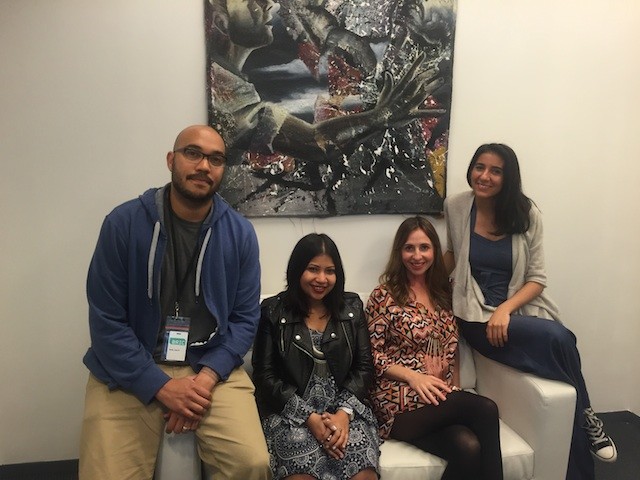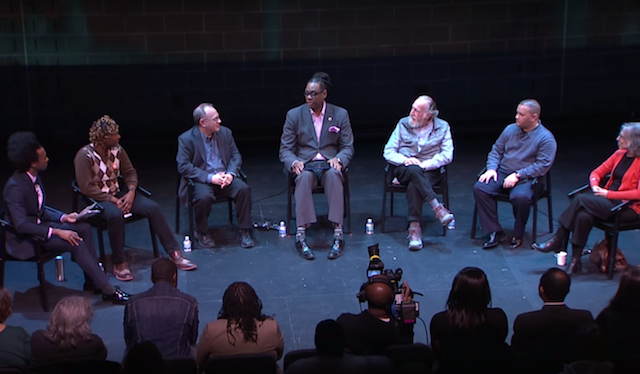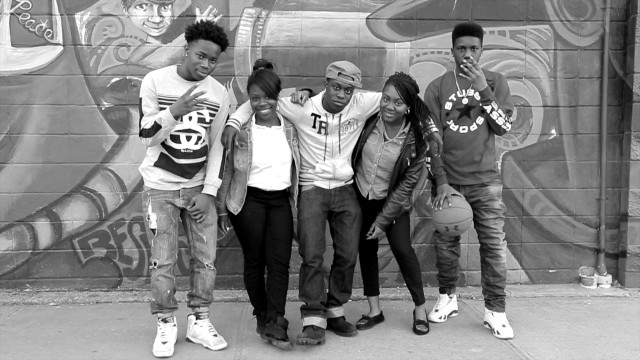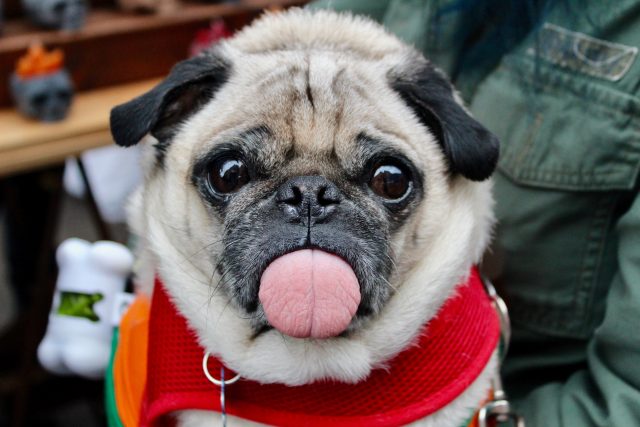
One of the best things about living in Brooklyn is that everyone has a story to tell, be it obnoxious and single-minded or scope-widening and inspirational. Naturally, we prefer to err on the latter side when seeking out interesting people to interview. And so does #BHeard, a public access town hall and video series under the aegis of BRIC TV whose mission is to galvanize the public into action on social justice issues by exploring them “through a human lens” (i.e. making documentary shorts), focusing especially on the stories of those whose voices are systemically silenced or underrepresented in the media.
The scope of those voices is wide: born in 2014 as a response to the fading media coverage on Michael Brown, #BHeard now covers everything from LGBTQ rights among women of color to the ongoing Key Foods fight in Park Slope. And for one-off videos that roll out as frequently as they do, the #BHeard series is incredibly well-produced. Both the videos and their subjects are colorful, vibrant and human. But between the organization’s televised town hall meetings, individual video packages and ongoing community initiatives on the ground, you start to wonder: who’s behind the camera? How do you turn a passion for social justice into a paying day job?
Well, those were our questions, anyway. So we sat down with the #BHeard team of associate producers Sriyanka Ray and Raquel Salazar, news director Gamaliel Ramos and editorial director Megan Donis. While the members of the #BHeard team have varied college backgrounds and interests, all of them began at BRIC TV and shared two things in common: a desire to tell stories, and a dissatisfaction with how the media does it.
“Even though we all work in media, we’re not happy with how media covers issues, from Michael Brown, to Akai Gurley, to Eric Garner,” said Ramos, 36. “And with #BHeard, we’re trying to right some of the wrongs that media has done.”
____________
In order to right those wrongs, #BHeard releases their own media videos anywhere from once a month to twice a week, depending on how projects come together. The videos straddle live reporting and op-doc in their feel, focusing on a single subject or character and combining film, news and storytelling to draw out both the individual’s narrative and the larger issues their story stands for.
“We have the ethics of journalism, but we want to make it more cinematic and engaging,” Donis said. She calls the #BHeard series “hyperlocal international news.”
For those of you out there who’ve always dreamed of making something similar, there’s good news: everyone on the #BHeard team has a lot of fun at their day job.
“Production is the fun part!” Salazar, 26, said. “Sriyanka and I usually go out with a production assistant and spend a solid day shooting the story and embedding ourselves into some else’s life and community. These moments of eating with their family or local bodega owner, or hanging around watching old family videos with everyone, remind me of how beautiful relationships with others can be, how you can begin to understand others by being as open and trusting with them as they are with you.”
Donis, 41, agreed that the freedom of #BHeard’s agenda makes the job a lot more meaningful.
“The great thing is, we don’t do breaking stories,” she told us. “And we don’t do stories just for the sake of stories.”
_____________

#BHeard’s drop-in town hall meetings are held in a 300-seat, downstairs ballroom space of the BRIC arts center, and offer a live complement to the company’s video series. (Go to one!)
Meetings are live-televised on BRIC’s network, and feature diverse voices to speak on panels about whatever the town hall’s topic happens to be, followed by an audience Q&A. They’ll often show one or two of their produced videos, too. Donis described these meetings to Brokelyn as “solution-driven,” as each town hall rounds out with a list of action items looking ahead. They put up debates for local elections, invite guest speakers with stakes in city planning, and occasionally feature performances — which, much like with their video series, helps to put a human face to social justice issues.
“We want to seek out not just experts who speak theoretically about things,” Donis said. “[Community organizations] are the experts, they’re the human contact.”
#BHeard relies heavily on Brooklyn’s advocacy organizations as liaisons between BK’s different communities, and the means of creating partnerships and trust with both guest speakers for the town hall meetings and the subjects they film in their videos. Those partnerships have included Yo S.O.S. (a youth-led anti-violence movement), The Osborne Association (criminal justice reform), El Puente (academy for peace and justice), the Arab American Association and Race Forward, a center for racial justice.
____________

“Most of our videos have been accomplished in partnerships with grassroots organizations, so I do a lot of research with my co-worker Sriyanka Ray to find organizations that would be open to media,” Salazar said.
Since just showing up with a camera crew on turf that isn’t your own can be alienating, Salazar explained, working at an organization like #BHeard means taking it as slow as necessary to form trusting bonds with both the organizations and the communities they represent.
“Because of the nature of our stories, mostly in vulnerable marginalized communities, it is imperative to gain trust,” she said. “We establish this trust pretty early on in our phone pre-interviews with the organization, show our previous work and what we stand for.”
From there, Salazar said that she and Ray will spend days “on site” in neighborhoods, working to form trusting relationships with the members of the community. They visit without any equipment, and simply gauge who would be comfortable telling their stories on camera.
“We’re all people, we don’t have an assignment desk, Ray, 26, said. “So we do it old-school style, doing ground work. Because the stories are out there. This is Brooklyn.”
____________
This is how #BHeard’s video series goes beyond straight storytelling, weaving in montages of the subjects’ lives and including their passions and interests even if not immediately related to the issue at hand.
“We explore their daily lives and see what best would visually represent their stories,” explained Salazar.
With other socially conscious video series like MTV’s “Decoded” or Buzzfeed Video (mostly woke, sometimes dog videos), we asked the #BHeard team how they felt their video series stacked up.
Donis thought for a minute, then recalled a town hall on police brutality in 2015 when, following the meeting, the audience marched out of the building together and went directly into #BlackLivesMatter protest.
“There’s nothing like taking this product you create, and seeing it do that.”
Once you’re done following @BRICTV and blasting the #bheard hashtag on Twitter, go ahead and follow Sam too: @ahoysamantha.
Leave a Reply



